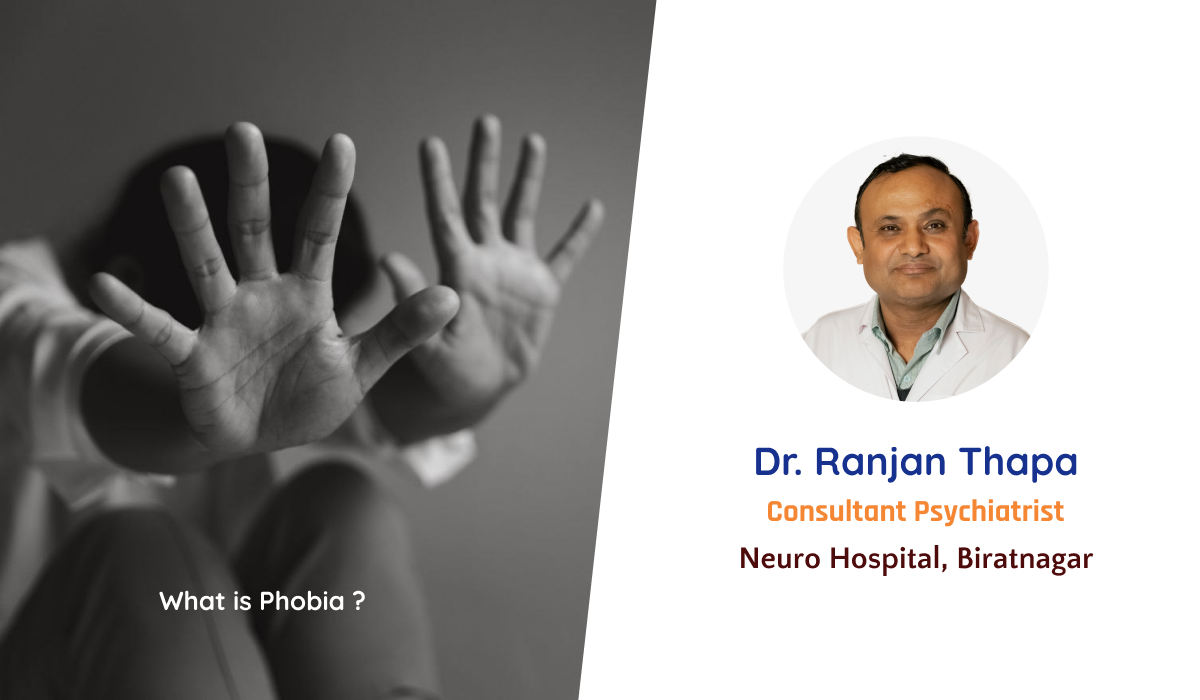What is Phobia?
A phobia is an uncontrollable, irrational, and lasting fear of a certain object, situation, or activity. This fear can be so overwhelming that a person may go to great lengths to avoid the source of this fear. One response can be a panic attack. This is a sudden, intense fear that lasts for several minutes. It happens when there is no real danger.
What causes phobias?
Research suggests that both genetic and environmental factors contribute to the start of phobias. Certain phobias have been linked to a very bad first encounter with the feared object or situation. Mental health experts don’t know if this first encounter is necessary or if phobias can simply occur in people who are likely to have them.
Symptoms of phobias
The most common and disabling symptom of a phobia is a panic attack. Features of a panic attack include:
- pounding or racing heart
- shortness of breath
- rapid speech or inability to speak
- dry mouth
- upset stomach
- nausea
- elevated blood pressure
- trembling or shaking
- chest pain or tightness
- a choking sensation
- dizziness or lightheadedness
- profuse sweating
- a sense of impending doom
A person with a phobia doesn’t have to have panic attacks for accurate diagnosis, however.
Treatment options
Treatment for phobias can involve therapeutic techniques, medications, or a combination of both.
Cognitive behavioral therapy
Cognitive behavioral therapy (CBT) is the most commonly used therapeutic treatment for phobias. It involves exposure to the source of the fear in a controlled setting. This treatment can decondition people and reduce anxiety.
The therapy focuses on identifying and changing negative thoughts, dysfunctional beliefs, and negative reactions to the phobic situation. New CBT techniques use virtual reality technology to expose people to the sources of their phobias safely.
Medication
Antidepressants and anti-anxiety medications can help calm emotional and physical reactions to fear. Often, a combination of medication and professional therapy is the most helpful.
What are the main types of phobias?
There are three main types of phobias: social anxiety disorder, agoraphobia, and specific phobias. The former two were previously known as complex phobias and are generally considered more severe.Specific phobias are sometimes called simple phobias.
- Social Anxiety Disorder:
Social anxiety disorder is a common type of anxiety disorder. A person with social anxiety disorder feels symptoms of anxiety or fear in situations where they may be scrutinized, evaluated, or judged by others, such as speaking in public, meeting new people, dating, being on a job interview, answering a question in class, or having to talk to a cashier in a store. Doing everyday things, such as eating or drinking in front of others or using a public restroom, also may cause anxiety or fear due to concerns about being humiliated, judged, and rejected.
- Agoraphobia:
Agoraphobia is a type of anxiety disorder. A person with agoraphobia is afraid to leave environments they know or consider to be safe. In severe cases, a person with agoraphobia considers their home to be the only safe environment. They may avoid leaving their home for days, months or even years.
Translated, agoraphobia means ‘fear of the marketplace’. Generally, busy public places (such as supermarkets, shopping centres, trams, trains, planes and airports) are feared the most. However, any public place – even a quiet church or an empty park – may seem threatening to a person suffering from agoraphobia.
- Specific Phobias:
A specific phobia, formerly called a simple phobia, is a lasting and unreasonable fear caused by the presence or thought of a specific object or situation that usually poses little or no actual danger. Exposure to the object or situation brings about an immediate reaction, causing the person to endure intense anxiety (nervousness) or to avoid the object or situation entirely. The distress associated with the phobia and/or the need to avoid the object or situation can significantly interfere with the person's ability to function. Adults with a specific phobia recognize that the fear is excessive or unreasonable, yet are unable to overcome it.
There are different types of specific phobias, based on the object or situation feared, including:
- Animal phobias: Examples include the fear of dogs, snakes, insects, or mice. Animal phobias are the most common specific phobias.
- Situational phobias: These involve a fear of specific situations, such as flying, riding in a car or on public transportation, driving, going over bridges or in tunnels, or of being in a closed-in place, like an elevator.
- Natural environment phobias: Examples include the fear of storms, heights, or water.
- Blood-injection-injury phobias: These involve a fear of being injured, of seeing blood or of invasive medical procedures, such as blood tests or injections
- Other phobias: These include a fear of falling down, a fear of loud sounds, and a fear of costumed characters, such as clowns.




